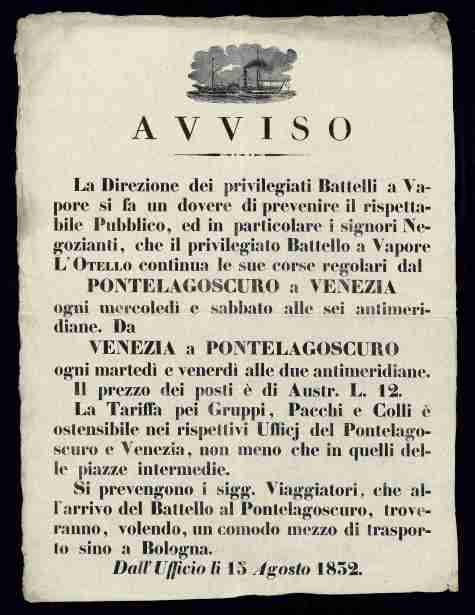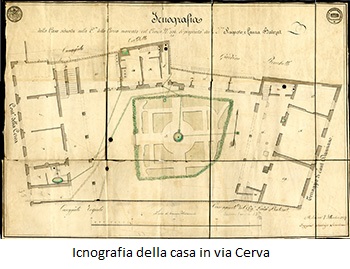- Milano
- “Mario Romani” Department of Economic and Social History and Geographical Sciences
- Archivio Visconti di Modrone
- I fondi
- Serie ottocentesche per materia
Serie ottocentesche per materia
 X - XX centuries
X - XX centuries
This archival fond is the most extensive of the entire archive Visconti di Modrone, with about about 1,300 pieces divided into different titles: Amministrazione centrale, Archivio, Araldica, Autografi, Beneficenze, Censi e redditi, Culto, Eredità, Feudi, Fondi e case, Imprese industriali, Matrimoni (the indication of the partitions into which the titles are divided is given in the summary of the archive)
The order dates back to the second half of the 19th century, a period in which several archivists worked for the family, who applied to the archive the Peronian system (by subject), adopted by almost all the noble archives of Lombardy. In those years, work was done on the inheritance documents of Duke Carlo Visconti di Modrone and Count Uberto, on the files of the central administration so as to facilitate the management of the family's movable and real estate assets, on the heraldic and matrimonial papers, and on the documents relative to the industrial enterprises of which the Visconti family were promoters or active participants. Subsequent documentary acquisitions were added without substantially changing the order of the archive.
Without entering into the complex organization of the documentation, for the description of which one can refer to the available inventory databases, it should be pointed out here several series that are significant not only for the history of the family, but of the city, as well as for the surveys of agricultural land and crops, and for the history of business and commerce.
Archivio: the series is fundamental for understanding the formation, stratification and events that led to the current state of the archive; it includes titles, classification indexes, lists and prospectuses of the various sub-fonds within the Visconti archive, diaries of the archivists who worked on the documentation.
Araldica: according to the archivist Brugnatelli, who dealt with the reorganization, this title was "very rich in documents, genealogies, stories, honors relating to both the Visconti di Modrone family and their relatives”. Here one will find elections to civil, ecclesiastical and military posts, admissions to colleges, citizenship papers, births and adoptions, birth and death certificates, family trees, coats of arms and inscriptions.

Beneficenza: the members of the Visconti family financed various charitable institutions such as the Pio istituto Oftalmico, thermal and seaside heliotherapy colonies, where they would also send students of the La Scala dance academy. In 1645, the Marquis Alessandro Modrone established the Opera Pia Visconti di Modrone, whose archive constitutes a distinguished fond from the family archive.
Culto: it preserves documents relating to chaplaincies and patronage of the Visconti family in numerous churches in the diocese of Milan, in Lombardy, in Novara and Ornavasso.
Eredità: in addition to the Visconti family's inheritances, there is also documentation of those from the Modrone, Pirovano, Taverna and Trivulzio families.
Fondi e case: it is of course the most conspicuous title, which for the subtitle of “Milan” alone numbers 9 folders. It conserves records of the administration of the family's real estate holdings, which encompass ample parts of the city, its surroundings and many areas in Lombardy: purchases, sales, rentals and repairs. Particularly noteworthy are the documents relative to the ducal residence in Via Cerva, precious evidence of a building that has since been lost.
Imprese industriali: this series includes the records of industrial companies in which the Dukes Carlo, Raimondo and Uberto Visconti di Modrone participated. Among others, the nucleus concerning the steam navigation service for passengers and goods along the river Po and on Lake Maggiore, which began in 1829, is significant. Above all, it preserves the correspondence with the state and navigational authorities in order to obtain the necessary permits, for determining routes and schedules, for the payment of duties and customs controls. One will also find documentation of the crews, equipment costs and the activation of the routes.
No less important is the documentation relative to the textile factories owned by the Visconti family in Vaprio, Canegrate and Somma Lombardo, with particular regard to the first 30 years of the 20th century.
For the factory of Vaprio, please refer to the specific section.

“Mario Romani” Department of Economic and Social History and Geographical Sciences
- About us
- Research Projects
- Teachings A.Y. 2025/2026
- MASTER
- PhDs
- Department Publications
- Events
- Other Initiatives
- International Area
- Department Library
- Archivio per la Storia del movimento Sociale Cattolico in Italia «Mario Romani»
- Archivio Visconti di Modrone
- Associazione Duca Marcello Visconti di Modrone per la storia dell’industria
- I fondi
- Serie antiche
- Serie ottocentesche per materia
- Serie ottocentesche ad personam
- Famiglia Anguissola di Grazzano
- Famiglia Taverna
- Altre serie
- Opera Pia Visconti di Modrone
- Pio Istituto Teatrale di Milano
- Stabilimento Velluti Visconti di Modrone - Velvis
- Società anonima per l'esercizio dei Teatri alla Scala e Canobbiana
- Struttura del complesso
- Come accedere all'Archivio
